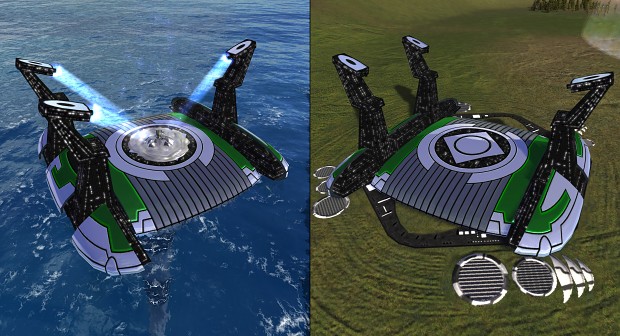

To complement your military, you also have access to an extensive array of defensive structures, from the standard walls and turrets to the more interesting nuclear missile launchers and long-range artillery installations. Battles can be between thousands of units at a time, with a chaotic mix of air, land, and sea forces.

This is reflected in the level design, with most maps consisting of large landmasses and varying water levels, further leading you down the path of military diversity. Games are typically more relaxed and slower-paced because of the larger scale. Supreme Commander’s greatest strength is its complex macro strategy elements. A well-balanced force is the key to victory, and it helps avoid a Starcraft II meta, where the game has so many hard counters that high-level games are essentially over if you unknowingly build an army that your opponent has predicted and countered already. The lack of hard counters means that trying to win with an army made up of only a few different units will typically fail. Due to this relatively basic system, Supreme Commander encourages you to build a combination of planes, ships, tanks, and robots.

Most units are only capable of fighting land units, air units, or naval units, but that’s the extent of class-based counters. Similarly, a tank that fires slowly with high damage will perform well against more expensive units but will be overwhelmed by hordes of cheap soldiers. A robot with low damage and a high fire rate will decimate large groups of weak enemies but struggle against singular, heavily armored vehicles. In Supreme Commander, there are unit counters, but it isn’t done in a class-based system it’s done through stats. It plays completely differently from a game like Starcraft II, in which units have different attributes that provide small but meaningful effects against certain unit types, such as Biological units being weak against Archons. Mechanically, Supreme Commander simplifies combat on an individual level but adds plenty of depth regarding macro strategy and the overarching flow of gameplay. Supreme Commander is a real-time strategy game that stands out from the pack due to a focus on large-scale combined arms warfare. The LOUD Project is not compatible with Supreme Commander’s campaign, so this review only touches on skirmish mode and multiplayer.

*This review is based on Supreme Commander: Forged Alliance with the LOUD Project installed.


 0 kommentar(er)
0 kommentar(er)
